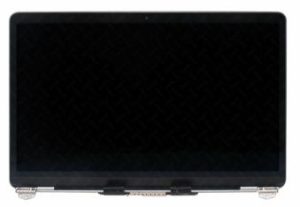Essential Guide to Replacing Your Faulty Hard Drive with PcComputersNSW Expertise
Essential Guide to Replacing Your Faulty Hard Drive with PcComputersNSW Expertise
Experiencing issues with your computer’s hard drive can be frustrating, but don’t worry—replacing it is something you can handle! Whether you’re dealing with slow performance, strange noises, or outright failure, swapping out that faulty hard drive is crucial. Let’s walk through the process together.
Key Takeaways
- Recognize signs of hard drive failure.
- Back up important data immediately.
- Choose the right replacement drive.
- Follow precise steps for installation.
Step 1: Identify Signs of Failure
Before jumping into action, confirm that your hard drive is indeed the culprit. Common indicators include frequent errors during normal operations, files disappearing or corrupting without reason, and prolonged loading times.
Step 2: Secure Your Data
Once you’ve pinpointed the problem as a failing hard drive:
- Back up vital files onto an external storage device or cloud service.
- If possible, clone your current drive to transfer all content seamlessly onto the new one.
Step 3: Selecting A Replacement
When shopping for a new storage solution:
- Consider an HDD (Hard Disk Drive) for large storage at cost-effectiveness or an SSD (Solid State Drive) for faster performance.
- Ensure compatibility with your computer’s specifications regarding size and connection interface (SATA or IDE).
For personalized advice on which option best suits your needs at PcComputersNSW—we’re here to help!
Step 4: The Replacement Process
Replacing a desktop PC’s hard drive involves several critical steps:
Tools You’ll Need:
- Screwdriver compatible with your PC case screws
- Antistatic wrist strap (for safety)
Installation Steps:
A. Turn Off and Unplug: Make sure to completely switch off your computer and disconnect it from any power outlets before you start disassembling its casing.
B. Open Up the System: Follow the instructions provided by the manufacturer to remove side panels or access doors; carefully locate existing drives in their respective slots, ensuring not to apply excessive force that might harm other components inside.
C. Replace The Old Drive: Detach mounting brackets holding the old drive securely; cautiously unhook cables connected at the back by gently pulling them away from connectors instead of forcefully yanking on wires themselves. When removing, be careful not to drop anything within the case that may cause complications later!
D . Install Your New Hardware: Position a new disk into an available slot aligning screw holes with those where previous hardware was secured tightly but without causing strain leading to potential disconnection while using the machine post-installation stages after completion of this step reverse opening actions close everything back up again ready final phase reboot system check whether works properly now if done correctly should start seeing improvements straight away which brings us last part checklist today…
Throughout this process, ensure you are grounded as static discharge can potentially damage electronic parts due to their delicate nature and requires gentle touch and patience above else focus on what you are doing and make sure to get it the right the first time around saves hassle having to go back fix mistakes made along way keeping a cool head is key success here!
Final Checks & Setup:
Once you’ve successfully fitted the new hardware component, power up your computer and watch it spring into action. If it doesn’t start as expected, don’t worry! Just refer to the troubleshooting guide provided by the manufacturer. In most situations, your machine will automatically detect the new part and ask you to set up its preferred settings. Once that’s done – pat yourself on the back! You’ve just upgraded your system like a true professional, all thanks to expert advice from us here at PcComputersNSW!
FAQs about Replacing Hard Drives
Q1 – How can I tell if my replacement was a success? A – Keep an eye on the operation of your device—if it starts up without any glitches, that’s usually a good sign! However, be vigilant for anything out of the ordinary and alert skilled technicians as part of preventive measures to ensure everything is truly running smoothly beneath the surface…
Q2 – Am I able to change laptop drives myself? A – Definitely, although due to its compact design, there might be some differences in accessibility. Always refer back to your user manual for specific instructions related to your model before taking on such a task alone since doing so without proper understanding could prove risky. We highly recommend seeking professional help when necessary especially while handling valuable equipment with personal data stored inside. Remember it’s always better safe than sorry when dealing with tech maintenance and repairs alike…
In conclusion following these straightforward steps should make transitioning from an old defective setup to a shiny new efficient one much smoother plus knowing you have backup support like us makes things even easier! Rest easy knowing we’ve got all bases covered ensuring peace of mind which is priceless, isn’t it? Stay tuned for more handy advice in our future posts until then enjoy computing everyone!


